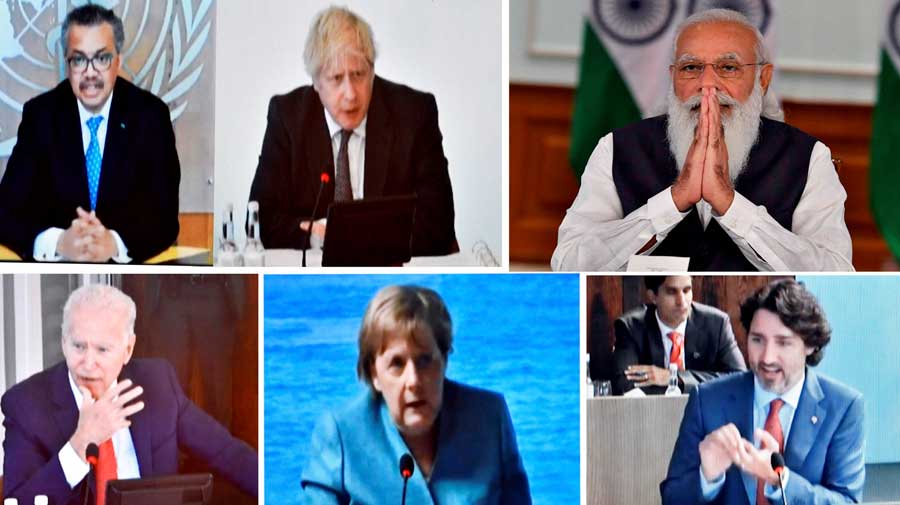As Joe Biden rallied American allies and partners during his first overseas trip since taking on the presidency of the United States of America, China was present everywhere. From the G7 to Nato, it was China’s growing global footprint and aggression that were shaping the conversations as Western nations assessed the single most important global challenge in front of them. After downplaying the Chinese threat for decades, suddenly Western nations find that they are being overtaken by a rival in ways that they had forgotten to appraise in their ‘end of history’ moment. And, now, as Chinese power redefines geopolitics and geoeconomics, the West is responding with an alacrity that many think should have come sooner.
It was earlier this year that the US, the European Union, the United Kingdom and Canada imposed coordinated sanctions on China that included travel bans, asset freezes and targeting of senior officials in Xinjiang who have been accused of serious human rights violations against Uighur Muslims. Biden has made working with allies his trademark foreign policy move and China has emerged as a focal point of action.
At the Nato leaders’ summit in Brussels — this was Biden’s first Nato meeting since taking office —the Western alliance warned of the military threat posed by China, underlining its behaviour as a “systemic challenge” with its rapidly expanding nuclear arsenal, “opaque” military modernization and military cooperation with Russia. Although the Western nations have pointed out that they do not want a new Cold War with China, the dangers of China “coming closer” to Nato in military and technological terms have led to a perceptible shift in attitude. The communiqué issued by Nato members is explicit about Chinese ambitions and behaviour posing “systemic challenges to the rules-based international order and to areas relevant to Alliance security”.
The G7 summit in the UK this month witnessed the inception of a more comprehensive approach to the China challenge. Urging China to “respect human rights and fundamental freedoms” and calling for a transparent investigation of the origins of Covid-19, the G7 leaders issued a statement that not only challenged Beijing on the persecution of Uighur minorities and the repression of the pro-democracy movement in Hong Kong but also underscored the “importance of peace and stability” across the Taiwan Strait. This resulted in a swift pushback from Chinese officials who accused the G7 of “baseless accusations” and demanded that they “stop slandering China, stop interfering in China’s internal affairs, and stop harming China’s interests”.
Perhaps the most significant outcome at the G7 summit was the adoption of the US-backed ‘Build Back Better World’ plan to support lower- and middle-income countries in building high quality infrastructure. It took a long time for the West to recognize the need for an alternative to China’s ambitious Belt and Road Initiative and that China has already stolen a march on it in this domain. In their joint statement, the G7 leaders underlined that they would offer a “values-driven, high-standard and transparent” partnership to the developing world on infrastructure and connectivity. The funding is still to be finalized, but it is clear that Washington is fully behind this proposal and will push its allies into doing their bit.
As challenges have mounted for China on the BRI front, this is an opportune moment for the West to come up with a robust alternative with its partners. The opacity of China’s lending through the BRI has raised hackles around the world, with Beijing being charged with pursuing a highly aggressive foreign policy in the garb of investment lending. China’s leverage on the developing world has increased in proportion to debt levels and the unsustainability of the loans it has extended. China’s ‘debt trap’ model of development cooperation has been under scrutiny for some time now but the developing world has complained about the lack of alternatives.
Major powers have been missing in action despite a $40-trillion infrastructure gap in the developing world. The idea of an India-Japan led Asia-Africa Growth Corridor looked very promising, but it has failed to take off. The Donald Trump administration had launched the ‘Blue Dot Network’ in 2019 to boost private sector-led infrastructure development in the Indo-Pacific, but it excluded direct financing of projects. The summit of Quad leaders in March had discussed the shared challenge of quality infrastructure investment and, more recently, the US and the UK asked democratic countries to come up with an alternative to China’s BRI. Now with the G7 coming up with an infrastructure aid programme to rival the BRI, there are hopes that those nations that have signed on to BRI under duress will be able to get a better deal.
India, one of the foremost critics of the BRI, can now take some credit in shaping the global discourse on the Chinese model of connectivity and development cooperation. With its Western partners, now New Delhi can hope to shape an alternative to Chinese predatory practices and push back against Beijing’s economic agenda.










